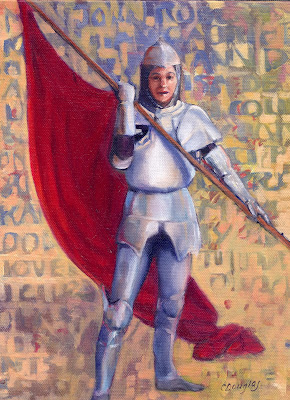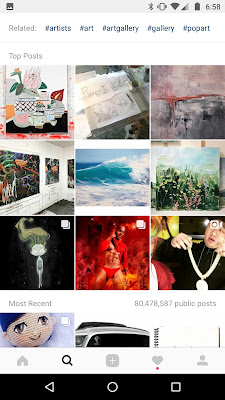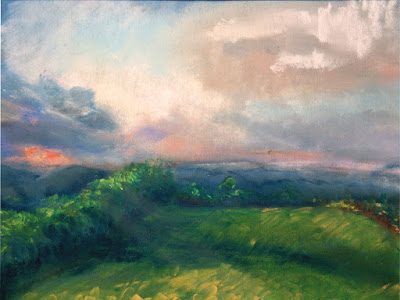There’s no reason to beat yourself up for not finishing. You will either find joy in it again, or move on to something else.
 |
| Hedgerow in Paradise, by Carol L. Douglas |
“Did you ever have a dream or goal, and then let go of it, and try to pick it up again later?” a reader asked. She hasn’t been feeling well, so I take the question as a sign that her health is better.
My first cancer, in 2000, required daily radiation, ten months of chemotherapy, three surgeries and a blood transfusion. Every day was devoted to hospitals, treatment and recovery. I didn’t think; I just did what my doctors told me to do. When I was finally done, I asked my oncologist what came next. “Go live your life,” he said.
The trouble was, it didn’t feel like I had a life anymore. I hadn’t worked in almost a year. My kids and husband were managing. Running, which had been so important to me, was impossible. I was, for the only time in my life, profoundly depressed and anxious.
 |
| Prayer Warrior, by Carol L. Douglas |
My answer was to seek out a therapist. “All the best people do it,” my friend consoled me. Therapy is likened to peeling an onion, because it is the process of getting past the original complaint and figuring out the deeper issues. I hated it, but it was worth all the time I spent.
A period in the desert can be useful in figuring out what’s important. I saw a former student recently. “I’m just not feeling it,” he’d told me. He’d had the impulse to take up painting and been very good at it. Work got in the way. He didn’t feel like taking it back up.
 |
| Cold light, by Carol L. Douglas |
And that’s okay. Our callings in life are difficult to discern. In art there is no ‘right’ career path. Experimenting, learning, and moving on is part of the process of discovery. It should never be characterized as failure, no matter what the voices from your childhood tell you.
Years ago, I had a prayer canvas. Each day when I started working, I would pray for people and write their names on the canvas in paint as I prayed. Unfortunately, it started to look like art. It got turned into the painting above.
It ought to have been simple enough to replace, but I never did. This week I finally fished through my collection of failed paintings for another canvas for that purpose. In doing so, I came across an unfinished nocturne I started with my students in last year’s
Sea & Sky workshop.
 |
| The very unfinished nocturne that grounded the study above. |
I have what realtors optimistically call a “seasonal water view.” That means we can see the ocean during the winter. I’ve watched the moon rise over the water for the last three nights. The light it cast was cool, almost green.
I’ve got a nocturne on my easel that’s exciting, but the color structure is wrong. That little nocturne I found in my discards ended up being an experiment in color for this big painting. I think I’ve got it. And I’ve got another idea for a painting as well. Both came from starting again on something deferred. They were totally different, but somehow related.



























